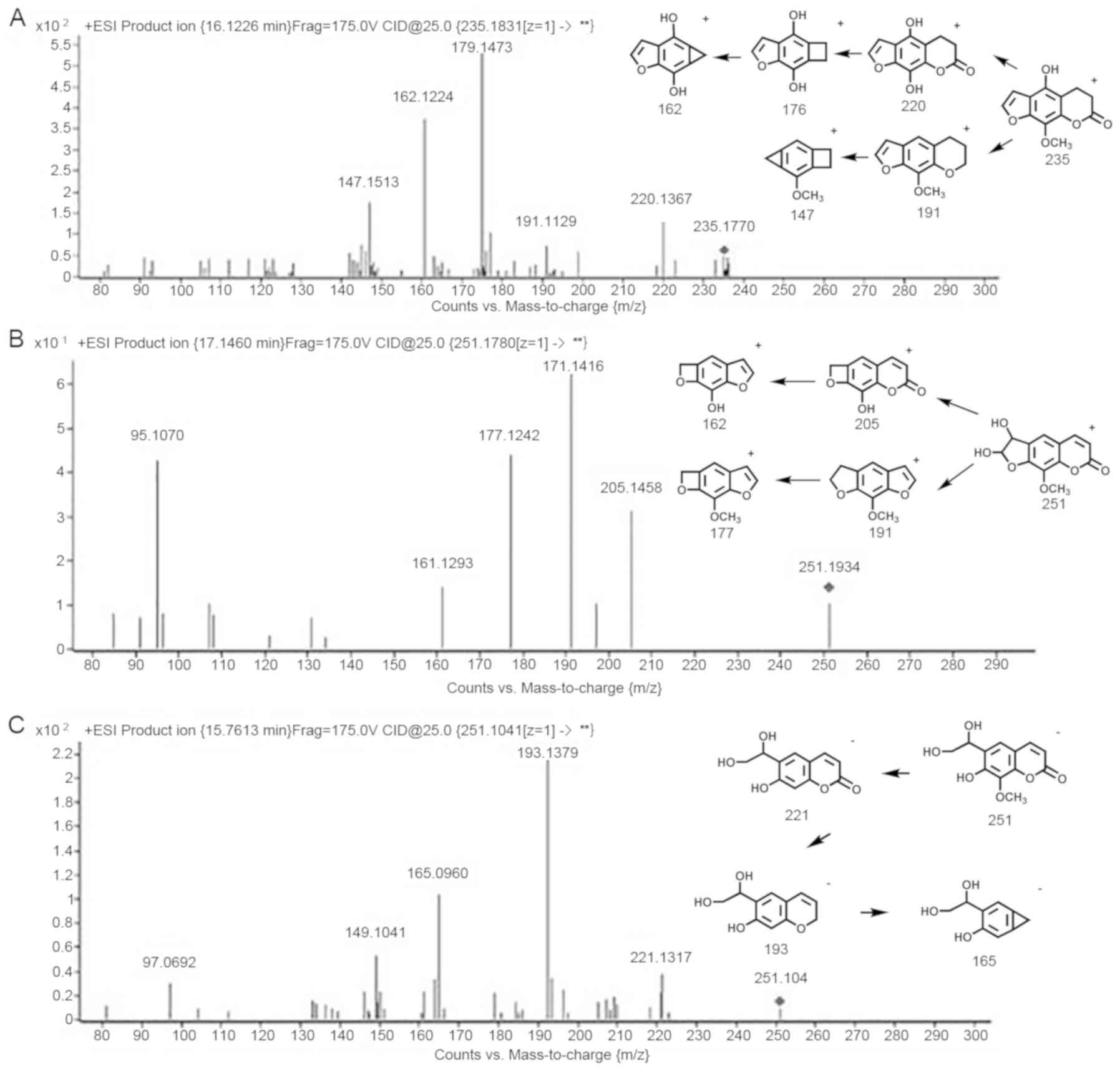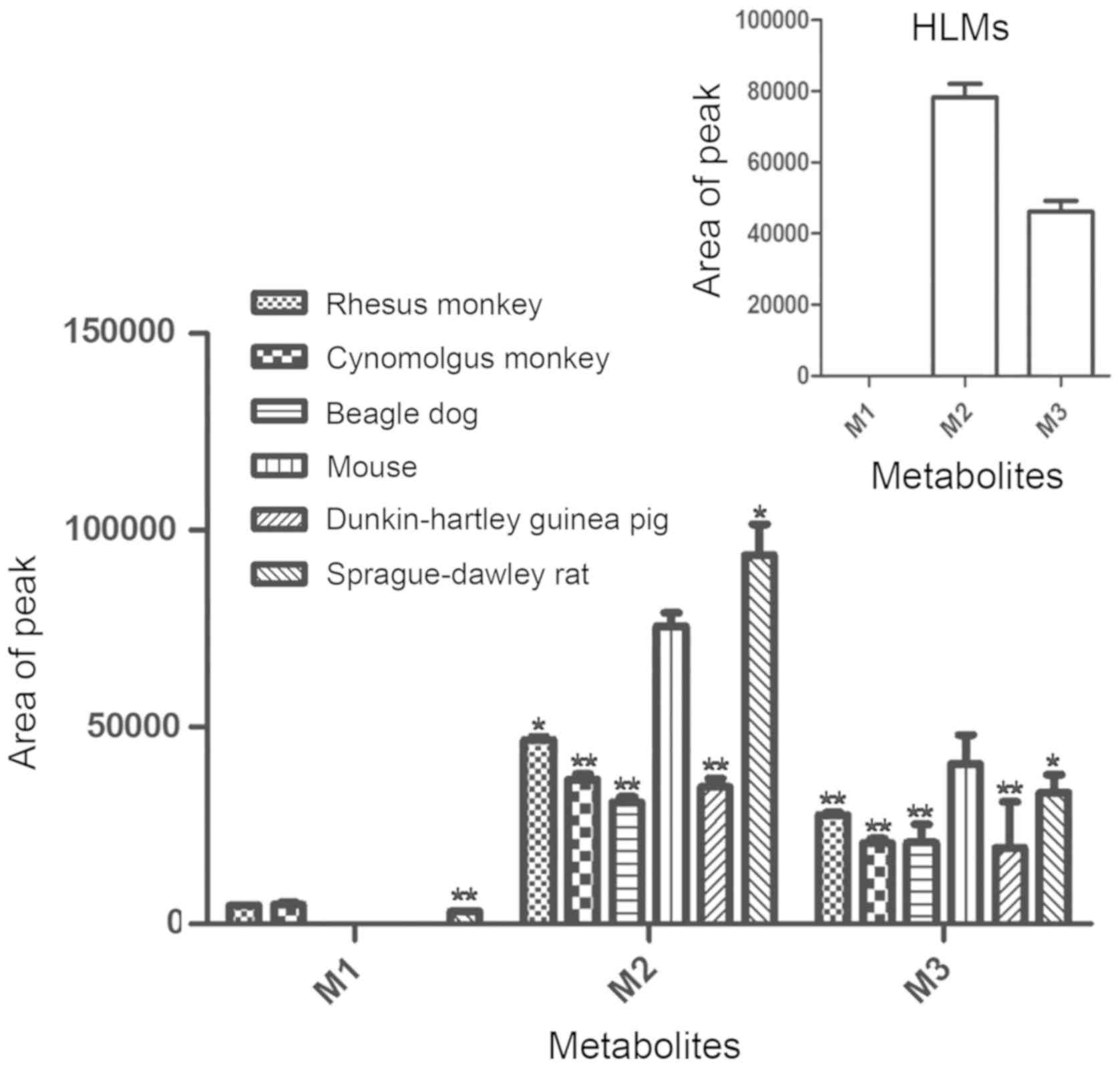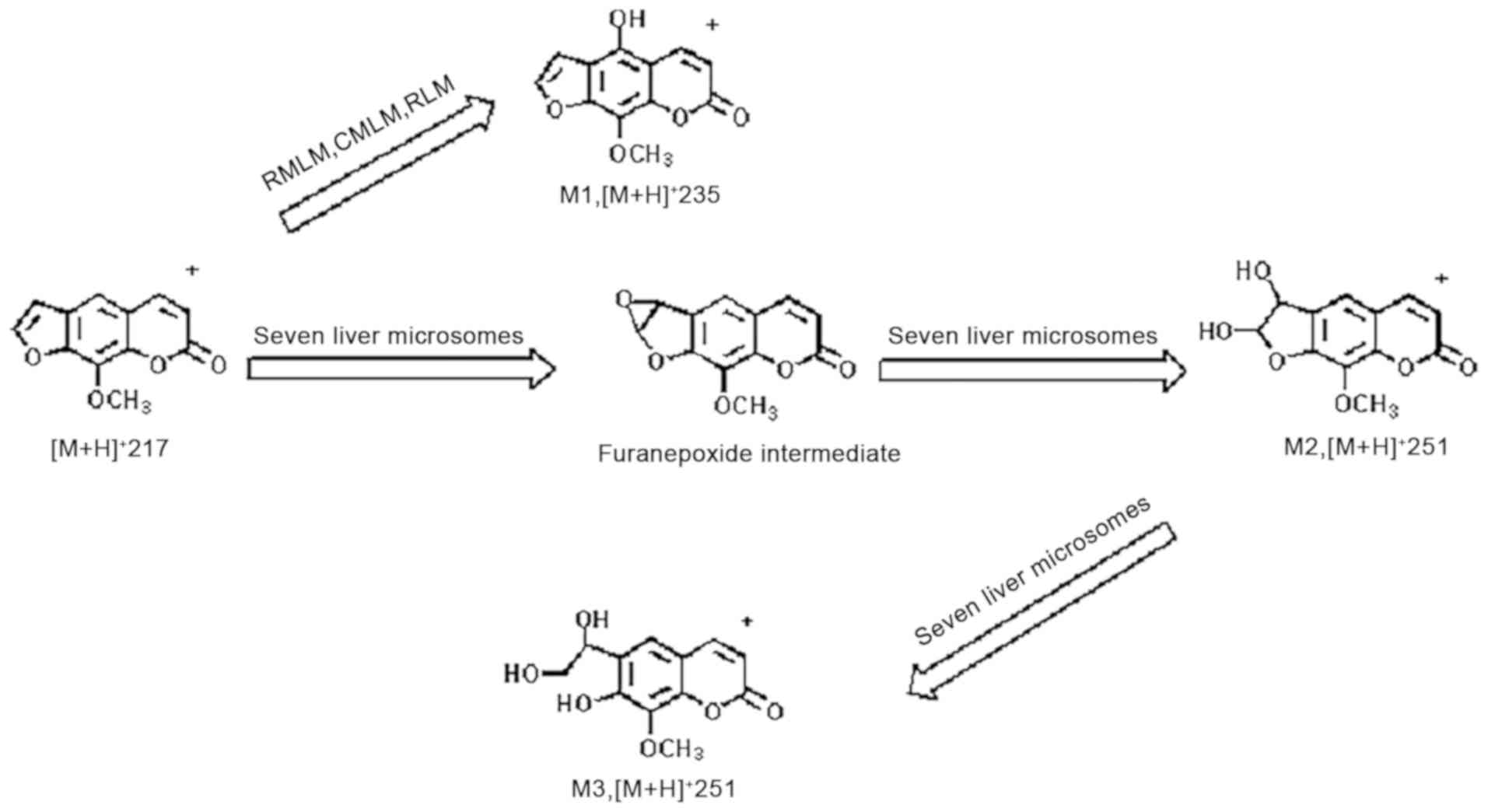|
1
|
Wagstaff DJ: Dietary exposure to
furocoumarins. Regul Toxicol Pharmacol. 14:261–272. 1991.PubMed/NCBI View Article : Google Scholar
|
|
2
|
Guo LQ and Yamazoe Y: Inhibition of
cytochrome P450 by furanocoumarins in grapefruit juice and herbal
medicines. Acta Pharmacol Sin. 25:129–136. 2004.PubMed/NCBI
|
|
3
|
Edelson R, Berger C, Gasparro F, Heald P,
Rook A, Perez M, Wintroub B, Knobler R and Jegasothy B: Treatment
of erythrodermic cutaneous T-cell lymphoma with extracorporeal
photochemotherapy. J Am Acad Dermatol. 27:427–433. 1992.PubMed/NCBI View Article : Google Scholar
|
|
4
|
Corash L, Lin L and Wiesehahn G: Use of
8-methoxypsoralen and long wavelength ultraviolet radiation for
decontamination of platelet concentrates. Blood Cells. 18:57–73.
1992.PubMed/NCBI View Article : Google Scholar
|
|
5
|
Tokura Y: Modulation of cytokine
production by 8-methoxypsoralen and UVA. J Dermatol Sci.
19:114–122. 1999.PubMed/NCBI View Article : Google Scholar
|
|
6
|
Zhou S, Chan E, Duan W, Huang M and Chen
YZ: Drug bioactivation, covalent binding to target proteins and
toxicity relevance. Drug Metab Rev. 37:41–213. 2005.PubMed/NCBI View Article : Google Scholar
|
|
7
|
Fouin-Fortunet H, Tinel M, Descatoire V,
Letteron P, Larrey D, Geneve J and Pessayre D: Inactivation of
cytochrome P-450 by the drug methoxsalen. J Pharmacol Exp Ther.
236:237–247. 1986.PubMed/NCBI
|
|
8
|
Labbe G, Descatoire V, Beaune P, Letteron
P, Larrey D and Pessayre D: Suicide inactivation of cytochrome
P-450 by methoxsalen. Evidence for the covalent binding of a
reactive intermediate to the protein moiety. J Pharmacol Exp Ther.
250:1034–1042. 1989.PubMed/NCBI
|
|
9
|
Letteron P, Descatoire V, Larrey D, Tinel
M, Geneve J and Pessayre D: Inactivation and induction of
cytochrome P-450 by various psoralen derivatives in rats. J
Pharmacol Exp Ther. 238:685–692. 1986.PubMed/NCBI
|
|
10
|
Mays DC, Hilliard JB, Wong DD and Gerber
N: Activation of 8-methoxypsoralen by cytochrome P-450. Enzyme
kinetics of covalent binding and influence of inhibitors and
inducers of drug metabolism. Biochem Pharmacol. 38:1647–1655.
1989.PubMed/NCBI View Article : Google Scholar
|
|
11
|
Mays DC, Hilliard JB, Wong DD, Chambers
MA, Park SS, Gelboin HV and Gerber N: Bioactivation of
8-methoxypsoralen and irreversible inactivation of cytochrome P-450
in mouse liver microsomes: Modification by monoclonal antibodies,
inhibition of drug metabolism and distribution of covalent adducts.
J Pharmacol Exp Ther. 254:720–731. 1990.PubMed/NCBI
|
|
12
|
Tinel M, Belghiti J, Descatoire V, Amouyal
G, Letteron P, Geneve J, Larrey D and Pessayre D: Inactivation of
human liver cytochrome P-450 by the drug methoxsalen and other
psoralen derivatives. Biochem Pharmacol. 36:951–955.
1987.PubMed/NCBI View Article : Google Scholar
|
|
13
|
Koenigs LL, Peter RM, Thompson SJ, Rettie
AE and Trager WF: Mechanism-based inactivation of human liver
cytochrome P450 2A6 by 8-methoxypsoralen. Drug Metab Dispos.
25:1407–1415. 1997.PubMed/NCBI
|
|
14
|
Goto T, Moriuchi H, Fu X, Ikegawa T,
Matsubara T, Chang G, Uno T, Morigaki K, Isshiki K and Imaishi H:
The effects of single nucleotide polymorphisms in CYP2A13 on
metabolism of 5-methoxypsoralen. Drug Metab Dispos. 38:2110–2116.
2010.PubMed/NCBI View Article : Google Scholar
|
|
15
|
Martignoni M, Groothuis GM and de Kanter
R: Species differences between mouse, rat, dog, monkey and human
CYP-mediated drug metabolism, inhibition and induction. Expert Opin
Drug Metab Toxicol. 2:875–894. 2006.PubMed/NCBI View Article : Google Scholar
|
|
16
|
Li L, Chen X, Zhou J and Zhong D: In vitro
studies on the oxidative metabolism of 20(s)-ginsenoside Rh2 in
human, monkey, dog, rat, and mouse liver microsomes, and human
liver s9. Drug Metab Dispos. 40:2041–2053. 2012.PubMed/NCBI View Article : Google Scholar
|
|
17
|
Li P, Gong Y, Lim HK, Jian W, Edom RW,
Salter R, Silva J and Weng N: Bio-generation of stable isotope
labeled internal standards for absolute and relative quantitation
of drug metabolites in plasma samples by LC-MS/MS. J Chromatogr B
Analyt Technol Biomed Life Sci. 926:92–100. 2013.PubMed/NCBI View Article : Google Scholar
|
|
18
|
Yang AH, He X, Chen JX, He LN, Jin CH,
Wang LL, Zhang FL and An LJ: Identification and characterization of
reactive metabolites in myristicin-mediated mechanism-based
inhibition of CYP1A2. Chem Biol Interact. 237:133–140.
2015.PubMed/NCBI View Article : Google Scholar
|
|
19
|
Yang AH, Zhang L, Zhi DX, Liu WL, Gao X
and He X: Identification and analysis of the reactive metabolites
related to the hepatotoxicity of safrole. Xenobiotica.
48:1164–1172. 2018.PubMed/NCBI View Article : Google Scholar
|
|
20
|
Koenigs LL and Trager WF: Mechanism-based
inactivation of P450 2A6 by furanocoumarins. Biochemistry.
37:10047–10061. 1998.PubMed/NCBI View Article : Google Scholar
|
|
21
|
Nakayama S, Takakusa H, Watanabe A, Miyaji
Y, Suzuki W, Sugiyama D, Shiosakai K, Honda K, Okudaira N, Izumi T
and Okazaki O: Combination of GSH trapping and time-dependent
inhibition assays as a predictive method of drugs generating highly
reactive metabolites. Drug Metab Dispos. 39:1247–1254.
2011.PubMed/NCBI View Article : Google Scholar
|
|
22
|
Peterson LA, Cummings ME, Vu CC and Matter
BA: Glutathione trapping to measure microsomal oxidation of furan
to cis-2-butene-1,4-dial. Drug Metab Dispos. 33:1453–1458.
2005.PubMed/NCBI View Article : Google Scholar
|
|
23
|
Pariser DM and Wyles RJ: Toxic hepatitis
from oral methoxsalen photochemotherapy (PUVA). J Am Acad Dcrmatol.
3:248–250. 1980.PubMed/NCBI View Article : Google Scholar
|
|
24
|
Bjellerup M, Bruze M, Hansson A, Krook G
and Ljunggren B: Liver injury following administration of
8-methoxypsoralen during PUVA therapy. Acta Derm Venereol.
59:371–372. 1979.PubMed/NCBI
|
|
25
|
Zhao G, Xu D, Yuan Z, Jiang Z, Zhou W, Li
Z, Yin M, Zhou Z, Zhang L and Wang T: 8-Methoxypsoralen disrupts
MDR3-mediated phospholipids efflux and bile acid homeostasis and
its relevance to hepatotoxicity. Toxicology. 386:40–48.
2017.PubMed/NCBI View Article : Google Scholar
|
|
26
|
Rodriguez-Proteau R, Mata JE, Miranda CL,
Fan Y, Brown JJ and Buhler DR: Plant polyphenols and multidrug
resistance: Effects of dietary flavonoids on drug transporters in
Caco-2 and MDCKII-MDR1 cell transport models. Xenobiotica.
36:41–58. 2006.PubMed/NCBI View Article : Google Scholar
|
|
27
|
Veronese ML, Gillen LP, Burke JP, Dorval
EP, Hauck WW, Pequignot E, Waldman SA and Greenberg HE:
Exposure-dependent inhibition of intestinal and hepatic CYP3A4 in
vivo by grapefruit juice. J Clin Pharmacol. 43:831–839.
2003.PubMed/NCBI View Article : Google Scholar
|
|
28
|
Ohnishi A, Matsuo H, Yamada S, Takanaga H,
Morimoto S, Shoyama Y, Ohtani H and Sawadaet Y: Effect of
furanocoumarin derivatives in grapefruit juice on the uptake of
vinblastine by Caco-2 cells and on the activity of cytochrome P450
3A4. Br J Pharmacol. 130:1369–1377. 2000.PubMed/NCBI View Article : Google Scholar
|
|
29
|
Becquemont L, Verstuyft C, Kerb R,
Brinkmann U, Lebot M, Jaillon P and Funck-Brentano C: Effect of
grapefruit juice on digoxin pharmacokinetics in humans. Clin
Pharmacol Ther. 70:311–316. 2001.PubMed/NCBI
|
|
30
|
Guo LQ, Fukuda K, Ohta T and Yamazoe Y:
Role of furanocoumarin derivatives on grapefruit juice-mediated
inhibition of human CYP3A activity. Drug Metab Dispos. 28:766–771.
2000.PubMed/NCBI
|
|
31
|
Draper AJ, Madan A and Parkinson A:
Inhibition of coumarin 7-hydroxylase activity in human liver
microsomes. Arch Biochem Biophys. 341:47–61. 1997.PubMed/NCBI View Article : Google Scholar
|
|
32
|
da Silva VB, Kawano DF, Carvalho I, da
Conceição EC, de Freitas O and da Silva CH: Psoralen and bergapten:
In silico metabolism and toxicophoric analysis of drugs used to
treat vitiligo. J Pharm Pharm Sci. 12:378–387. 2009.PubMed/NCBI View
Article : Google Scholar
|
|
33
|
Marumoto S and Miyazawa M:
Biotransformation of bergapten and xanthotoxin by Glomerella
cingulata. J Agric Food Chem. 58:7777–7781. 2010.PubMed/NCBI View Article : Google Scholar
|
|
34
|
Wang LL, Hai Y, Huang NN, Gao X, Liu WL
and He X: Human cytochrome P450 enzyme inhibition profile of three
flavonoids isolated from Psoralea corylifolia: in silico
predictions and experimental validation. New J Chem. 42(Issue
13)2018.
|
|
35
|
Hai Y, Feng S, Wang L, Ma Y, Zhai Y, Wu Z,
Zhang S and He X: Coordination Mechanism and Bio-Evidence: Reactive
γ-Ketoenal Intermediated Hepatotoxicity of Psoralen and Isopsoralen
Based on Computer Approach and Bioassay. Molecules.
22(1451)2017.
|


















